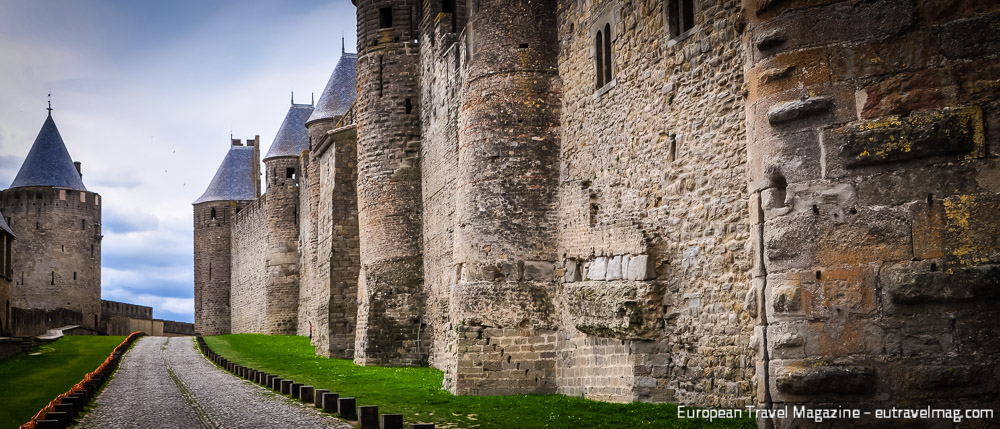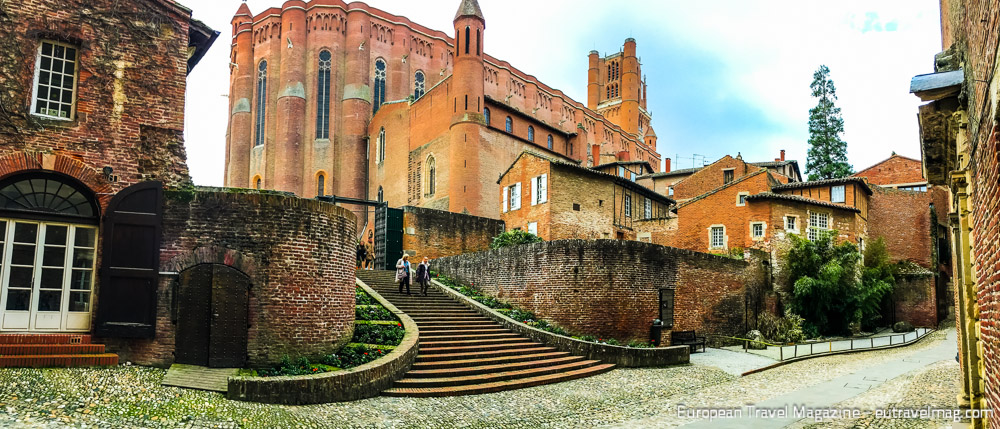The Occitanie region in the south-west of France is filled with the remains of a turbulent history, cultural heritage and proud traditions. Troubadours sang about the Holy Grail in the medieval fortress of Carcassonne, heretics were burnt on the stake by the hundreds and politically, it was ruled in turn by Visigoths, Franks, Merovingians, Moors, Angevins and French.
In the middle of this political hornet’s nest, the city of Albi gave name to the Albigensians – or as they are better known today: the Cathars.
This group of Christian non-conformist gained incredible popularity between the 12th and 14th century. The movement believed in an ascetic lifestyle, even abstinence and refused the Catholic Sacrament of the eucharist. In many ways, they were morally superior to the decadent and corrupt Catholic church.
Albigensian Crusade
The Catholic church was against the Cathar movement right from the start in the beginning of the 12th century and Pope Innocent III excommunicated the lords, that defended the Cathars. But it wasn’t until one of his numerous appeals to the King of France to crusade against the heretics bore fruit and King Philip II decided to act against those lords who permitted Catharism within their lands. Though the actual crusade lasted only a couple of years, the internal conflict between the Catholic church and the Cathars continued for twenty years.
The Albigensian Crusade, or Crusade against the Cathars, began in 1209 and was headed by Simon De Montfort during its bloody first years. At the massacre at Béziers July 22nd 1209, between 15.000 and 20.000 inhabitants were killed by the crusading army. While there’s no direct source to back this statement, it’s alleged, that when asked how to spare the lives of the Catholic inhabitants of Béziers, the Cistercian abbot Arnaud Amalric replied
Kill them all, God will know His own
The fall of Carcassonne
Just under a month later, the majestic castle of Carcassonne surrendered without any bloodshed and the nearby cities such as Albi, Castelnaudary, Castres, Fanjeaux, Limoux, Lombers and Montréal quickly capitulated without a fight. After the fall of Carcassonne, Raymond Roger Trencavel – the viscount of Carcassonne, was imprisoned by the victorious forces and died in his own dungeon, only 24 years old.
A year later – on the anniversary of the massacre at Béziers – the well-fortified city of Minerve surrendered after a month of besiegement, when their well was destroyed. The resident Cathars were given the choice to convert to Catholicism or die. The 140 who refused, were burned at the stake July 22nd 1210.
The following years, towns were in turn liberated by the defender of the Cathars, Count Raymond VI of Toulouse and recaptured by the Catholic forces under Simon de Montfort, like the deserted town of Hautpoul, just south of Mazamet where the informative Cathar Museum is located. King Peter II of Aragon came to the aid of Toulouse in 1213 but was killed in the battle. This marked the end of Catalan influence north of the Pyrenees. Pope Innocent III died in 1216 and when Simon de Montfort died in the siege of Toulouse in 1218, the crusade was left in temporary disarray.
The Inquisition
The Catholic church needed another strategy to uproot Catharism and in 1234, the infamous Inquisition was established. With tools like imprisonment, cross wearing, pilgrimage and burning, the Inquisition crushed the movement from within and succeeded where brute force had failed. No wonder the Catholic church would employ this horrifically efficient tool many times again in the course of history.
The final blow to the Cathar movement was struck at Montségur – the last refuge of the Cathars. The castle of Montségur was besieged for nine months by the archbishop of Narbonne and the seneschal of Carcassonne. At the end, 210 Cathars were burned at a massive bonfire March 16th 1244.
Château de Montségur was destroyed. The ruin you can visit today, is a remnant of a border fortress from the 17th century. But the ruin remains a symbol of the Cathar movement and the crusade against a group of Christians, that didn’t follow doctrine. And 773 years later, the story still resonates in people.
The legacy
Today, the history lives on in the structures, that stood the test of time. And those who didn’t. The ruins of old castles, that were sacked in the following centuries. The largest brick Cathedral in the world in Albi, built after the Albigensian Crusade to assert the Catholic supremacy in the region. The fortified Bastide towns all over the region, constructed by the descendants of the tyrannized people, trying to address the underlying feeling of insecurity and mistrust in outsiders.
And even though these structures were built by or as a consequence of Catholic dominance, they remain just as much symbols of the Albigensian Crusade and the Cathars. Because every building tells a story of the events that caused it and the history that shaped it.
The history of the Cathars is just one layer in the onion, that it Occitanie. It doesn’t exclusively define the region, but it explains some of the culture, architecture and Occitan self-understanding. And there are many more layers to peel and discover for yourself.
If you want to know learn the Top10 attractions of Albi, click on that link. If you want to know more About France or learn some Useful Information, check out those pieces.
More info:
- Cathar Castles Info
- Cathar Country website
- Occitanie region’s Cathar tourism website
- Our List of Top 10 attractions of Albi

































Much more information on the cathars can be found on this facebook page: https://www.facebook.com/Cathar-History-and-Tours-in-Languedoc-France-131077930304901/ where links for day tours in the region can be found.